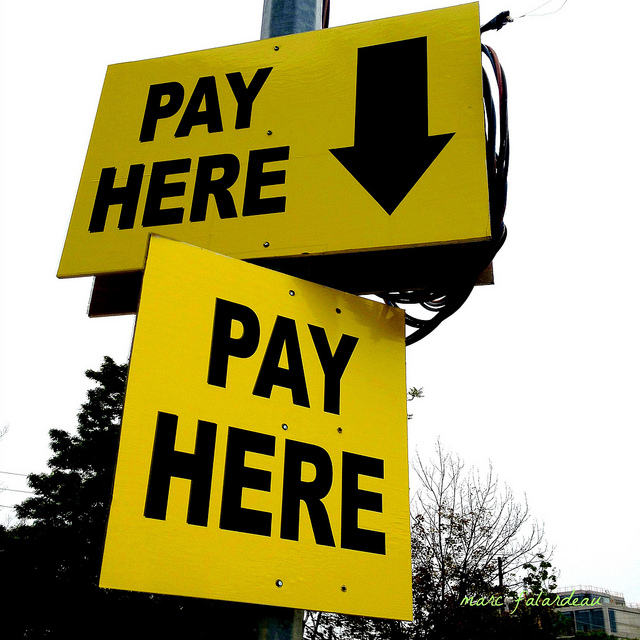What Type Of Travel Insurance Do I Need?
One of the first questions most people ask is “What type of travel insurance do I need?”
It’s a good question, as there are a lot of travel insurance types out there, and choosing between them can seem a bit confusing at first. In this article, we outline the main types of travel insurance, and when they make sense.
Read on to find out what type of travel insurance is best for you.
Single Trip
A single trip policy is best for you if you’re only planning on travelling once within a given year. This type of policy is the most common type of travel insurance. Single trip policies, as the name suggests, only cover you for the duration of one trip away from home.
Multi Trip
If you travel several times in a year, it may be worthwhile to get a multi-trip travel insurance policy. A multi-trip policy is often only about 30% more than a single trip policy, and provides travel insurance for multiple trips in a single year.
Multi-trip plans often have limits on the length of the trips you can take. 15 or 30 days is standard, although some companies (like Meloche Monnex) provide up to 60 days per trip.
If you’re interested in a multi-trip policy, look into the travel insurance perks offered by credit card companies. One of the credit cards you have in your wallet may even offer coverage! Coverage often includes the cardholder’s spouse and children and can be an effective way to cut travel insurance costs. As always, read the insurance policy carefully, so you know exactly what you’re getting.
All Inclusive Travel Insurance
An all inclusive policy may be best for you if you want comprehensive coverage. All inclusive policies generally cover emergency medical coverage, trip cancellation and trip interruption, baggage insurance and medical evacuation insurance. Many all inclusive policies offer high limits for emergency medical coverage. The major downside of all inclusive policies is cost. You can often pay more than double the cost of a single trip policy for all inclusive travel insurance.
 If you’re watching your budget, consider getting a simple single trip policy, and get an additional trip cancellation policy. This can save you a considerable amount of money. Also make a quick phone call to your home insurance company to see if they offer any baggage or personal belongings insurance.
If you’re watching your budget, consider getting a simple single trip policy, and get an additional trip cancellation policy. This can save you a considerable amount of money. Also make a quick phone call to your home insurance company to see if they offer any baggage or personal belongings insurance.
Trip Cancellation and Interruption Insurance
Trip cancellation and interruption insurance is useful if you’re concerned about the costs to you if your trip is cancelled or delayed. These types of travel insurance are especially useful for trips that are especially expensive. Trip cancellation and interruption insurance is also a worthwhile option if you’re travelling with multiple people, or if you’re travelling with children. Would you want to take your child on a long haul flight if they’ve just developed a nasty stomach virus? It happens all the time.
Trip cancellation and interruption insurance will let you cancel your trip for pre-specified reasons like illness of you or a travelling companion, or job loss.
Always contact your insurance company to get their OK before cancelling a trip. It’s quite common for people to assume a reason for cancellation is covered under their policy, only to find out that there’s an exclusion in the policy.
 You can get cancel for any reason travel insurance, which, as the name suggests, will generally allow you to cancel a trip for any reason. These policies tend to be a bit expensive, but they do provide peace of mind.
You can get cancel for any reason travel insurance, which, as the name suggests, will generally allow you to cancel a trip for any reason. These policies tend to be a bit expensive, but they do provide peace of mind.
Top Up Travel Insurance
Top up travel insurance is a good option if you already have travel insurance, but don’t have coverage for the entire time that you’re away. This type of travel insurance is especially useful if you have work or credit card insurance that will only cover you for the first part of your trip. Using your original insurance for the first part of your trip, and getting a top up policy for the rest, can be significantly cheaper than getting a whole new policy for the entire time.
 Although it may seem obvious, make sure you tell your top up insurance company about your original travel insurance policy.
Although it may seem obvious, make sure you tell your top up insurance company about your original travel insurance policy.
Baggage
Baggage insurance covers you in case your luggage is lost, stolen, or delayed. The amount of insurance varies from about $500 to $2000 per person, depending on your policy.
 Your home insurance policy often provides some coverage for your belongings while you’re on a trip, but they likely won’t cover baggage delays.
Your home insurance policy often provides some coverage for your belongings while you’re on a trip, but they likely won’t cover baggage delays.
Medical Evacuation
Emergency medical evacuation insurance is especially important if you’re going on a cruise or if you’re visiting a remote area. If you fall ill aboard a cruise, an emergency medical evacuation by helicopter can easily cost $150,000.
Emergency medical evacuation insurance will pay for transportation to the nearest medical facility or back to your point of departure. However, all policies require pre-approval by a qualified physician.
While medical evacuation is included in many medical travel insurance policies, you can get separate medical evacuation insurance.
International SOS specializes in emergency evacuation and 24-hour help for any travel emergency. Membership does not include medical insurance, but does provide top notch medical evacuation insurance.
Be careful if you’re considering getting insurance from the cruise company. Many cruise companies do not include medical evacuation insurance in their travel insurance policies.
Pre-Existing Conditions
If you have a pre-existing medical condition (like diabetes or heart issues), a policy that allows for coverage for pre-existing conditions is a necessity. A pre-existing condition is a health problem you already had when your trip started, even if you didn’t have the condition at the time you got your insurance. Policies that allow for pre-existing medical conditions are generally more expensive, but at least you’ll be covered if you have a medical emergency related to your pre-existing condition.
![]() Any condition that appears from the time you get your insurance to the time you start your trip may be counted as a pre-existing condition, even if you didn’t know about it at the time you got your insurance. Pregnancy is often considered a pre-existing condition by many travel insurance companies.
Any condition that appears from the time you get your insurance to the time you start your trip may be counted as a pre-existing condition, even if you didn’t know about it at the time you got your insurance. Pregnancy is often considered a pre-existing condition by many travel insurance companies.
Accidental Death and Dismemberment
Accidental death and dismemberment is a useful type of travel insurance, and is generally (though not always) included in emergency medical travel insurance policies. This type of travel insurance will cover you if you for injuries while riding as a fare-paying passenger on an airplane, helicopter or common carrier (a bus, train, or boat). There is also a death benefit that is paid out (generally between 10,000 to 25,000) if you die on your trip. In keeping with it’s charming name, an accidental death and dismemberment policy will pay you a set amount if you lose an arm, leg, or other body part.
Bottom Line On The Type of Travel Insurance You Need
Whatever type of travel insurance you need, read your policy carefully before you leave. Read Don’t let your Travel Insurance Company Deny your Claim for some great tips on how to avoid travel insurance policy loopholes. Our travel insurance quote checklist will arm you with good questions to ask to make sure you get the best travel insurance coverage.
Where to Learn More About Travel Insurance in Canada
Kanetix Canada is a great resource for checking out different Canadian Travel Insurance companies. Check out the tabs at the top of your screen to see top up, trip cancellation, multi-trip, and single trip quotes.
Kanetix.ca even lets you look at travel insurance policies online so you can compare.





Comments (0)